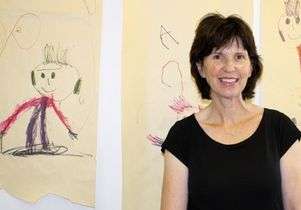Preschoolers with autism show gains after play-based program

Treatments for autism spectrum disorder that appear promising in a research lab often don't work as well in real-life settings.
But one intervention, developed over the past 15 years by UCLA scientists, has been shown to be effective in reducing symptoms of autism in preschool-age children, even when it's carried out in facilities with less substantial resources and by mostly young teaching assistants.
"Children who received the intervention were more engaged with their teacher, used more communication gestures and words than did children who were not in the intervention," said Connie Kasari, the paper's senior author and a UCLA professor of education and psychiatry. The study was published online in the Journal of Child Psychology and Psychiatry.
The program, called Joint Attention, Symbolic Play, Engagement, and Regulation, or JASPER, targets the social communication deficits in young children with autism. Educators trained in the approach learn to adapt their interactions with autistic children to model appropriate play and communication skills. They show children how to pay attention to objects and people at the same time as someone else, and how to establish play routines.
"It looks like just a great play session, but the reality is that the therapist is using many, many strategies to help the child engage and communicate," Kasari said.
Kasari has conducted previous studies on JASPER but the latest research is the first to evaluate its effectiveness in toddlers attending public facilities that aren't directly run by university researchers. The new study was with 113 toddlers with autism in two centers in New York City: one in Harlem and the other in the Bronx. At the start of the study, the children had an average age of 31 months.
JASPER consultants trained 45 teaching assistants at the centers who previously had no training in the approach, and Kasari's group provided ongoing supervision and remote training throughout the study. In one classroom in each center, children received the same treatment that the programs had already been using: two hours a day of group and individual activities tailored to preschoolers with autism. In another classroom at each venue, children participated in 90 minutes of the same program as the other classroom and 30 minutes of one-on-one JASPER programming each day.
At the end of 10 weeks, children who had received the JASPER intervention had increased their use of one- and two-word expressions and were spending more time interacting with others rather than playing independently.
"The intervention worked just as well in the real world as it had under very controlled conditions, giving us more confidence about the effectiveness of JASPER," said Kasari, who is also a founding member of the Center for Autism Research and Treatment at UCLA. "In clinics, we tend to see mostly white, middle-class participants, so we're showing that this intervention works equally well across diverse groups as represented in this study."
In particular, Kasari said she was pleased that JASPER worked well among mostly lower-income minority children—a segment of the population that has often been left out of studies conducted at major research institutions.
The centers evaluated in the study have continued to use the intervention since the trial concluded, and Kasari's group has provided training on the approach for educators at schools in the U.S. as well as in Serbia, Macedonia and Canada. The researchers also are continuing to study which elements of the program contribute to it its success, and whether it works as well in small groups as it does when students receive one-on-one attention.
The Centers for Disease Control and Prevention estimates that one in 68 children born in the U.S. has some form of autism spectrum disorder, the term for a group of brain disorders that involve varying degrees of difficulties in social interaction and communication. Most symptoms of the disorder show up in 2- and 3-year-old children, and studies have shown that the earlier a child is diagnosed and treated, the better their outcome.
More information: Stephanie Y. Shire et al. Hybrid implementation model of community-partnered early intervention for toddlers with autism: a randomized trial, Journal of Child Psychology and Psychiatry (2016). DOI: 10.1111/jcpp.12672



















